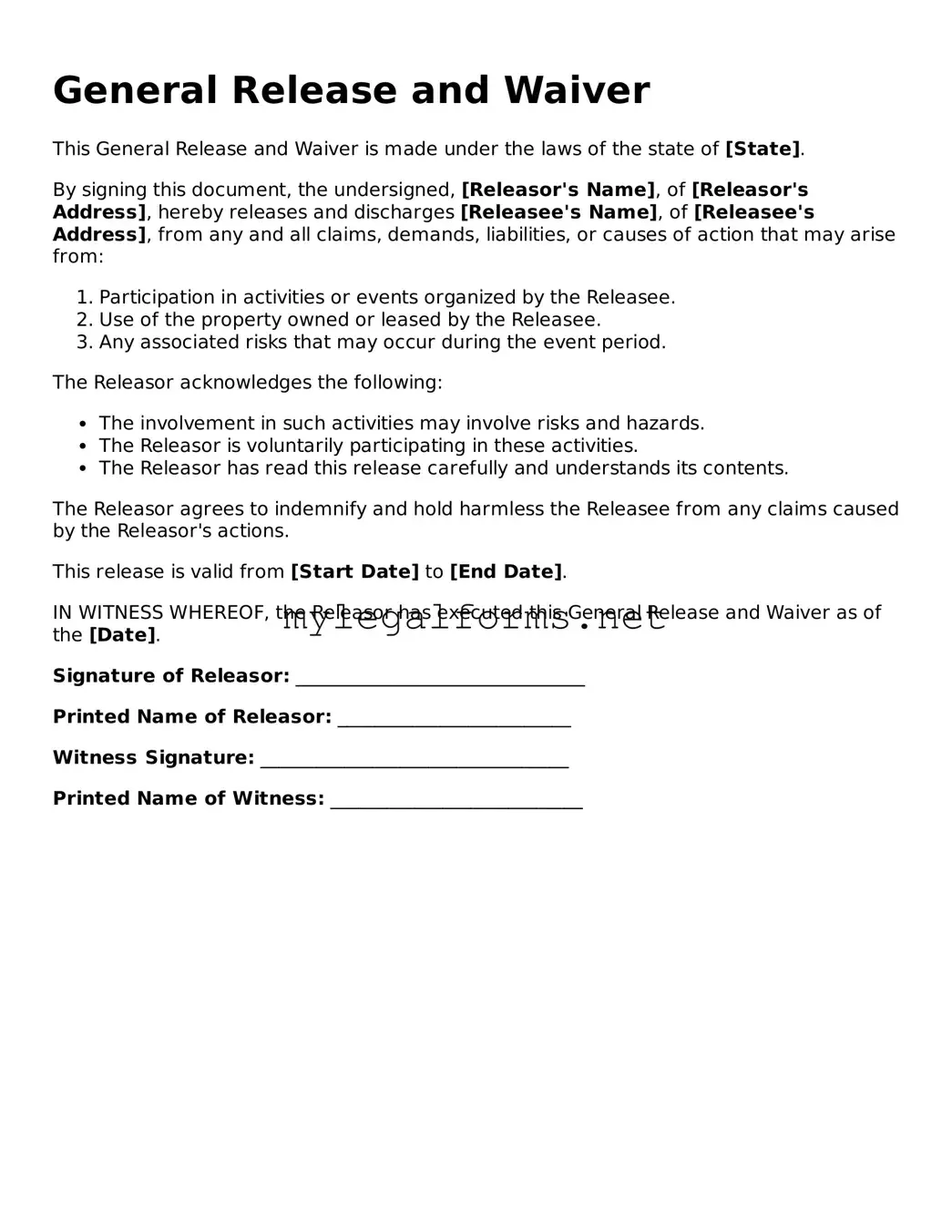General Release and Waiver
This General Release and Waiver is made under the laws of the state of [State].
By signing this document, the undersigned, [Releasor's Name], of [Releasor's Address], hereby releases and discharges [Releasee's Name], of [Releasee's Address], from any and all claims, demands, liabilities, or causes of action that may arise from:
- Participation in activities or events organized by the Releasee.
- Use of the property owned or leased by the Releasee.
- Any associated risks that may occur during the event period.
The Releasor acknowledges the following:
- The involvement in such activities may involve risks and hazards.
- The Releasor is voluntarily participating in these activities.
- The Releasor has read this release carefully and understands its contents.
The Releasor agrees to indemnify and hold harmless the Releasee from any claims caused by the Releasor's actions.
This release is valid from [Start Date] to [End Date].
IN WITNESS WHEREOF, the Releasor has executed this General Release and Waiver as of the [Date].
Signature of Releasor: _______________________________
Printed Name of Releasor: _________________________
Witness Signature: _________________________________
Printed Name of Witness: ___________________________
